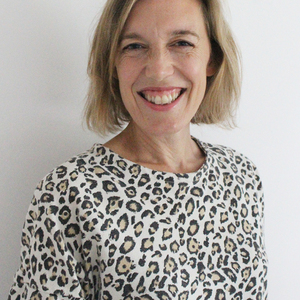Insights
INSIGHTS
All Topics
My Account
How to plan a project
14 Jun 2022by Mary Wessel
We offer some advice on planning projects, looking at the need for project managers, the best ways to communicate, the act of actually devising a plan, and much more
To reach a goal, whatever that goal might be, requires a route of how to get there. Nailing down a project plan will help you deliver what you set out to, on time and on budget.
Your project plan will map out the steps needed to reach your goal. It’s a vital tool for everyone involved in delivering the project in ensuring that key milestones are met and making it easy to report back to stakeholders on progress.
It will also give your project tight boundaries, so there will be less chance of scope creep and your project becoming unwieldy and out of hand.
Nominate a project manager
It requires a team to deliver a project, and often one that draws together colleagues from across an organisation. But you’ll likely need one person to lead the project, guide others through it, and keep everyone on track in terms of time and money.
Identify your stakeholders and sponsors
Identify who will be impacted by the end result of your project and who you’ll need to report to along the way. That will include whoever’s holding the purse strings for the project, and who will need to sign it off.
Then get them all in one room (or one screen) to discuss:
- Why the project is needed
- How much money you have to spend
- What success looks like
- What the end deliverables are
- Key dates and a rough idea of schedule.
End users and focus groups
You might also need to factor in end users or a focus group who can feed back on any product development. For example, if you’re developing a new online system for volunteers to request fundraising materials, you’ll probably want to get some UX feedback from them.
Put together a rough cut
Next it’s time to dig out your white board and get scribbling. Start with the who, what, when and how. Consider:
- What are your key deliverables?
- When do they need to be completed by?
- Who is involved in each deliverable? And how will they feed into this element of the process? This could include sharing expertise or giving feedback.
This first draft can be high level and rough, but will give you an overarching plan to fill out later.
Run it past your project team
Take your first draft back to the team to make sure it’s reasonable and achievable. Having an open and honest discussion may also flag up processes that could happen simultaneously.
For example, if you’re building a new website, writing copy and picture research could run alongside wireframe development timings, rather than happening one after the other.
Involving other team members will also help to get buy-in and build trust and communication across the team – which will be very helpful if the road ahead gets bumpy.
Flesh out your plan
Using the information gathered from your project team, stakeholders and sponsors, you can start planning in detail. Break the project down into phases and key milestones, then work through all the tasks and sub-tasks that need to happen to be able to deliver each milestone.
Each task will need a deadline and person responsible for delivery. Always give yourself lots of wiggle room, particularly if elements of the plan are interdependent and a missed deadline on one could have a knock-on effect for future tasks.
Project budget
Record any costs involved in each task and include some contingency. While you’ll need to follow your organisation’s procurement processes in getting quotes, it’s still best to be safe than sorry in case of any unforeseen hikes in cost.
Work through your risks
You’ll also need to think through any risks to the project, and how they could be addressed. A risk can be anything that will impact your project’s success, either by overspend, missing deadlines or delivering a poor end product. Work with your team to do this, as they’re the people who’ll best know the ins and outs of their part of the project.
You could also speak to colleagues within your organisation or outside who have led similar projects to find out any problems they ran into.
Useful software
There are stacks of digital project management tools out there to help you organise your project, which is especially helpful if your team is working remotely. Asana, Trello, and Monday.com are a few of the most popular and we’ve discussed the pros and cons of each to help you find a tool that will help you.
Get your plan signed off
When you have a solid draft, take it back to your project team to get their buy-in and a final check that the timelines are doable. Then take it back to your sponsor for final sign-off, especially around budgets.
You’ll then be ready to get going. It’s likely that your plan will shift and change along the way, so be prepare to be flexible.
03 Jan 2025by Ioan Marc Jones
Climate change facts you need to know in 2025
03 Jan 2025by Ioan Marc Jones
An A-Z glossary of climate change terms and definitions
Our Events
Charity Digital Academy
Our courses aim, in just three hours, to enhance soft skills and hard skills, boost your knowledge of finance and artificial intelligence, and supercharge your digital capabilities. Check out some of the incredible options by clicking here.















